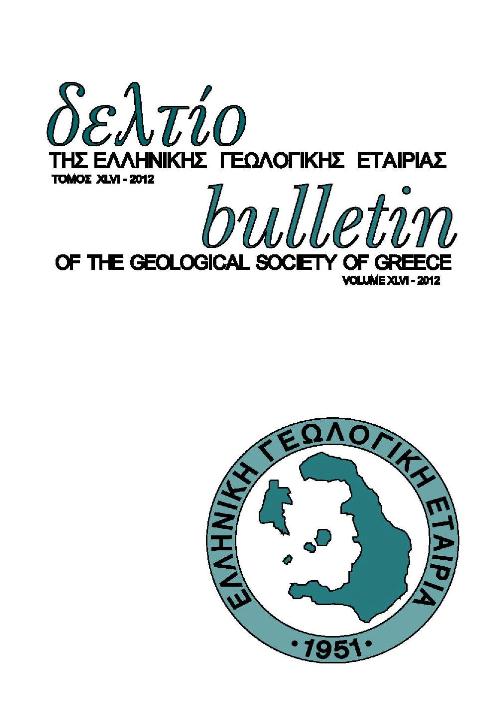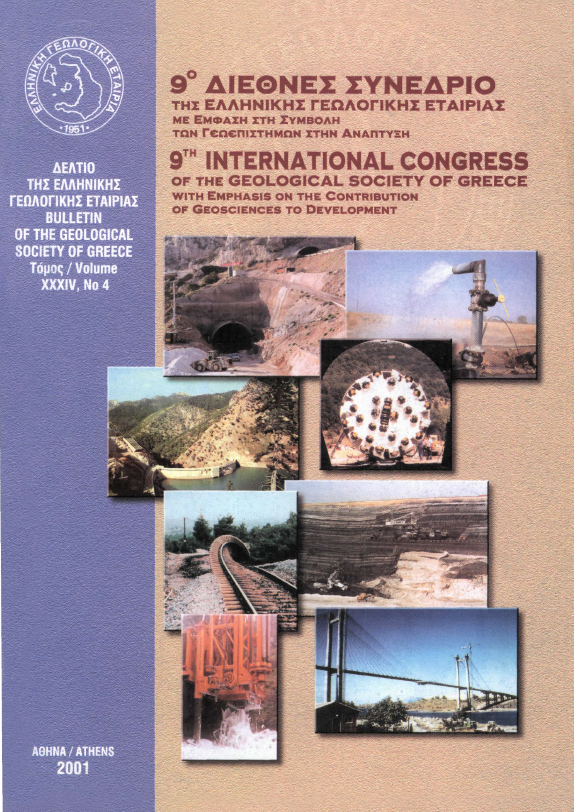INSTALLATION AND PRELIMINARY RESULTS FROM A SMALL APERTURE SEISMIC ARRAY IN TRIPOLI, GREECE
Abstract
A small aperture seismic array was installed by the University of Athens, in the area of Tripoli, Greece, on July 16th 2003, in order to test the performance of seismic array processing in the area of Greece and assess its contribution to earthquake location, especially in offshore areas not azimuthally covered by the existing, conventional seismological networks. The array consists of four three-component seismological stations, one of them in the middle of a small, almost equilateral triangle, formed by the deployment of the other three stations. Despite the fact that array siting is a compromise of array installation criteria, equipment safety and logistics, the test character of the experiment can be served successfully. The array transfer function depicts good azimuthal coverage nonetheless the existence of side-lobes and a rather wide main lobe is characteristic of spatial aliasing and low resolution in the two-dimensional wavenumber domain. The resolvable wavenumber passband of the array permits the determination of most of the common seismic body wave phases (Pn, Pg, Sn, Sg, etc.) for local and regional events in the area of Greece. Location of recorded events was performed using slowness and backazimuth data, calculated by f-k analysis of the seismic waveforms. Preliminary results have been compared to epicentres calculated by the Geodynamic Institute of the National Observatory of Athens. Although some differences are observed, these are not significant and location results as well as overall array performance can be improved by array calibration and travel-time, azimuth and slowness correction calculations.
Article Details
- How to Cite
-
Pirli, M., Voulgaris Ν., Alexopoulos, J., & Makropoulos, K. (2004). INSTALLATION AND PRELIMINARY RESULTS FROM A SMALL APERTURE SEISMIC ARRAY IN TRIPOLI, GREECE. Bulletin of the Geological Society of Greece, 36(3), 1499–1508. https://doi.org/10.12681/bgsg.16540
- Section
- Seismology

This work is licensed under a Creative Commons Attribution-NonCommercial 4.0 International License.
Authors who publish with this journal agree to the following terms:
Authors retain copyright and grant the journal right of first publication with the work simultaneously licensed under a Creative Commons Attribution Non-Commercial License that allows others to share the work with an acknowledgement of the work's authorship and initial publication in this journal.
Authors are able to enter into separate, additional contractual arrangements for the non-exclusive distribution of the journal's published version of the work (e.g. post it to an institutional repository or publish it in a book), with an acknowledgement of its initial publication in this journal. Authors are permitted and encouraged to post their work online (preferably in institutional repositories or on their website) prior to and during the submission process, as it can lead to productive exchanges, as well as earlier and greater citation of published work.









